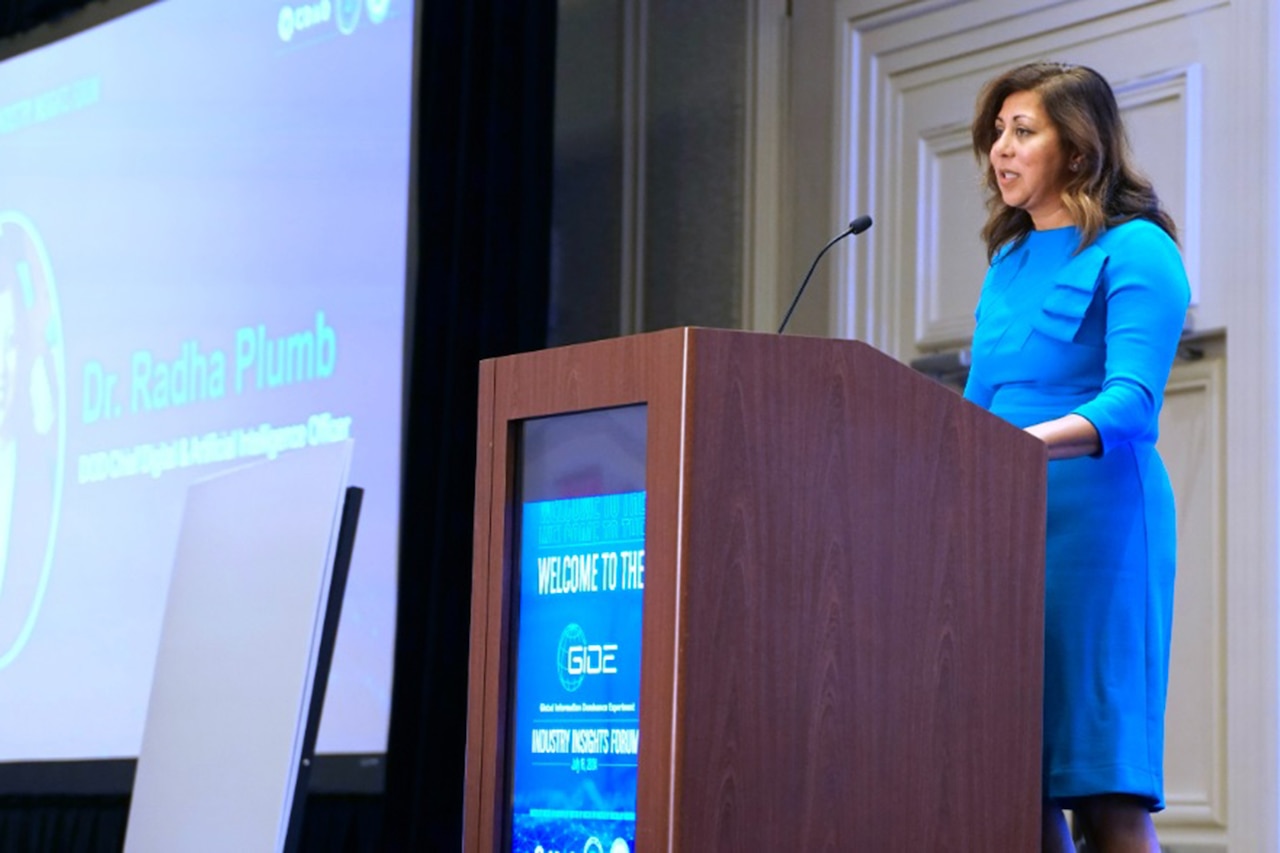Today, the Department of Defense (DoD) Chief Digital and Artificial Intelligence Office (CDAO), in partnership with the Office of Under Secretary of Defense Research and Engineering (OUSD R&E) and the Defense Innovation Unit (DIU), conducted the first Global Information Dominance Experiments (GIDE) Industry Insights Forum. The one-day event, held at the Hyatt Regency Reston in Reston, VA, highlighted collaborative opportunities for private industry to address the DoD's artificial intelligence (AI) needs, while amplifying the significance of the CDAO's recent GIDE iterations.

Radha Iyengar Plumb
"The GIDE Industry Insights Forum is a crucial event to communicate with government and industry leaders the needs of the Department of Defense to spur innovation and scale AI and digital capabilities," remarked Dr. Radha Plumb, CDAO. "Working with our industry leaders allows for quicker innovation by identifying the best industry solutions and technology to bring into our enterprise infrastructure to support the warfighter."
The GIDE Industry Insights Forum featured plenary sessions and networking opportunities to spur engagement and collaboration between government and industry leaders, from traditional and non-traditional industry, to solve some of the Department's digital challenges. The GIDE Forum focused on key Combined Joint All-Domain Command and Control (CJADC2) development lessons learned over the iterations of GIDE 5-11 in 2023 and 2024. The event also included presentations from OUSD R&E's Joint Fires Network (JFN) and CDAO acquisitions, which highlighted the role of the new Open Data and Applications Government-owned Interoperable Repositories (Open DAGIR) program to onboard capability.
Open DAGIR is CDAO's approach to scaling data, analytics, and AI capabilities by establishing a multi-vendor ecosystem to enable industry and government to integrate data platforms, development tools, services, and applications in a way that preserves government data ownership and industry intellectual property. The GIDE Forum is a key step to enabling Open DAGIR by communicating with Industry.
"The GIDE Industry Insights Forum validates the CDAO's commitment to incorporating innovation from academia and businesses at every level into its AI capability and talent pool." remarked Bonnie Evangelista, acting deputy CDAO for acquisitions.
The CDAO plans to host similar events in the future to deepen industry engagement and to build on Open DAGIR. Historically, "Industry Days" and similar events have proven to strengthen commercial partnerships and enhance understanding of the DoD's technology and talent needs, enabling the progression of AI initiatives.
About GIDE
GIDE 1-4 were facilitated by the Northern American Aerospace Defense Command and U.S. Northern Command to lead rapid innovation in DoD critical capabilities alongside other combatant commands. In 2023, GIDE transitioned to OSD/CDAO with GIDE 5, expanding collaboration across combatant commands and international partners.
About the CDAO
The CDAO became operational in June 2022 and is dedicated to integrating and optimizing artificial intelligence capabilities across the DoD. The office is responsible for accelerating the DoD's adoption of data, analytics, and AI, enabling the Department's digital infrastructure and policy adoption to deliver scalable AI-driven solutions for enterprise and joint use cases, safeguarding the nation against current and emerging threats.






